How to Bleach Wood
Often, when repairing or restoring furniture, it becomes necessary to bleach wood. An effective way restore older pieces of wood is to learn how to bleach wood.
What is wood bleaching ?
Wood bleaching is a process of oxidizing wood that discolors lignin(a substance that holds wood cellulose fibers together) and is located in the walls of plant cells and in the inter cellular space.
But now, if the fungus struck the wood, that is, it acquired blue, yellow and any other color spots, then bleaching may not help, although manufacturers of wood bleach promise such an effect, so try it.
We believe that this fungus removal effect is possible with surface damage to wood by the fungus.
What is wood bleaching used for?
So you built your wooden house. Everyone wants to admire it: the natural texture of wood, a pleasant color and everything is new and fresh.
Unfortunately, over the years, the external wood will deteriorate, the sun’s rays, mold, and “blue” will sooner or later cause the walls to change color.
Wood bleaching is necessary to remove the effects of weathering on wood, traces of water and rust. And as a bonus to all this, the wood undergoes antiseptic, fungicidal treatment.
Most often, the wood of log houses,floors and furniture are bleached.
Wood bleaching is a simple and reliable way to return the wood of the house to its original appearance. Its effectiveness is determined by the depth of the lesion: if it exceeds 3 mm, the composition will not be able to penetrate inside.
How to Bleach Wood
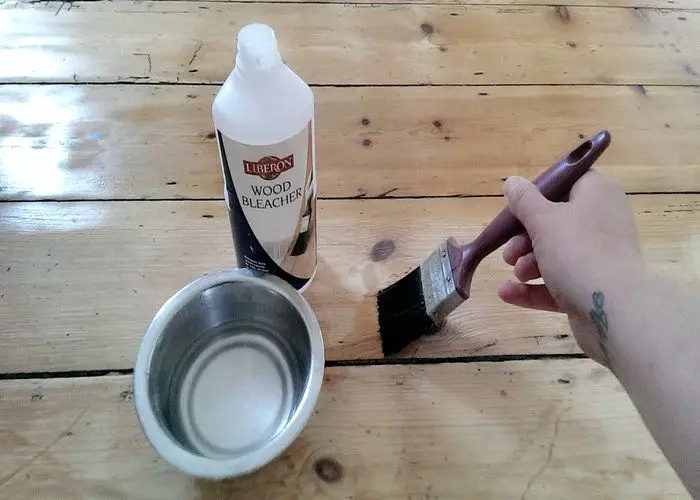
As you understand, bleaching wood at home is not the easiest thing.
Nevertheless, if you still decide to bleach wood yourself you should follow this rules:
- Whatever tool you use, wash it off with water after application.
- If you use acid bleach, rinse it with an aqueous solution of soda.
- You cannot combine different bleaching agents on the same surface.
- Do not bleach glued products, they can stick up.
Want to speed up the bleach process?
To speed up the bleach wood process you should treat the surface with a solution of:
- sulfuric acid (20 grams),
- sodium peroxide (25 grams)
- oxalic acid (15 grams)
- water (1000 grams).
The principle of bleaching wood
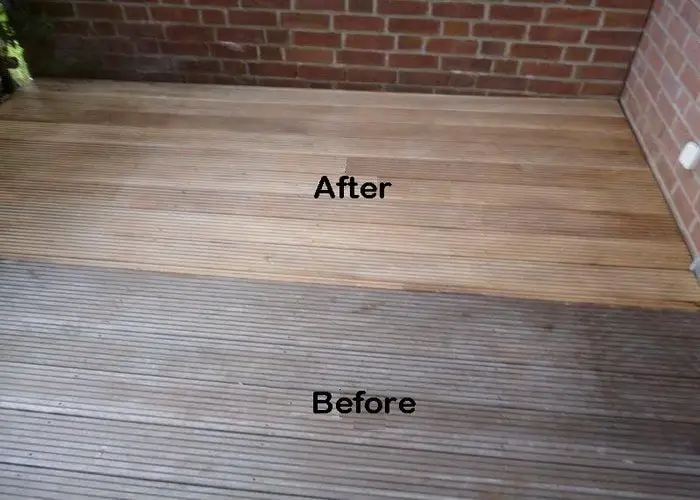
See the difference: before and after bleaching
All tools for bleaching wood work on the same principle: they cause an oxidation process, as a result of which the pigment colors of lignin (a substance that characterizes the stiffened walls of plant cells) become discolored, and fungal cells are destroyed.
Active oxygen radicals are responsible for whitening.
Bleaching solutions are divided into those containing chlorine and not. The first contains:
- potassium hypochlorite,
- sodium hypochlorite,
- chlorine dioxide
- and bleach.
In chlorine-free solutions, the active substances are: hydrogen peroxide, ammonia, salts, alkali and oxalic acid.
Purpose of bleaching wood
The purpose of bleaching is to lighten or repair very dark types of wood such as oak .
This may be necessary on the following occasions:
- if a wood or piece of furniture is to be painted in a lighter color than the original wood tone.
- the wood is stained (water stains, glass edge stains).
- the wood generally has a non-uniform color (due to use).
Type of Bleaches for Wood
In general, two types of bleaches are available on the market for domestic use.
These bleaches solutions consist of a combination of sodium hydroxide as bleach and a special stain.
The reaction only takes place when both agents come into direct contact with each other on the wood and start to react.
TIP! Before treating wood with bleaching agents, the surface must be well sanded. As a result of grinding, you can remove a lot of dark staining.
Want to start treating wood? Check this amazing article which will help you a lot!
In addition, bleach penetrates better into the structure of the wood and is absorbed by it if it is applied to polished boards.
So, the main recommendations for bleaching wood are:
- after bleaching, any remaining bleach solution must be washed off with water;
- acid-based bleach is washed off with an aqueous solution of soda;
- you can not combine different bleach solutions, the surface should be treated with only one type of bleach.
- if the wood is severely affected by the fungus, it is necessary to carry out bleaching with a more concentrated solution.
- bleaching is most effective if it is performed at a temperature of 18-20 degrees Celsius and at a moisture of about 60%;
- when bleaching wood inside the house, it is necessary to ensure the ventilation of the room, because almost all bleach solutions contain unsafe chemicals.
- if the treatment was carried out in a bathhouse, before taking bathing procedures, it is necessary to ventilate the room two times to remove chlorine vapor.
How to Bleach Wood with Hydrogen Peroxide
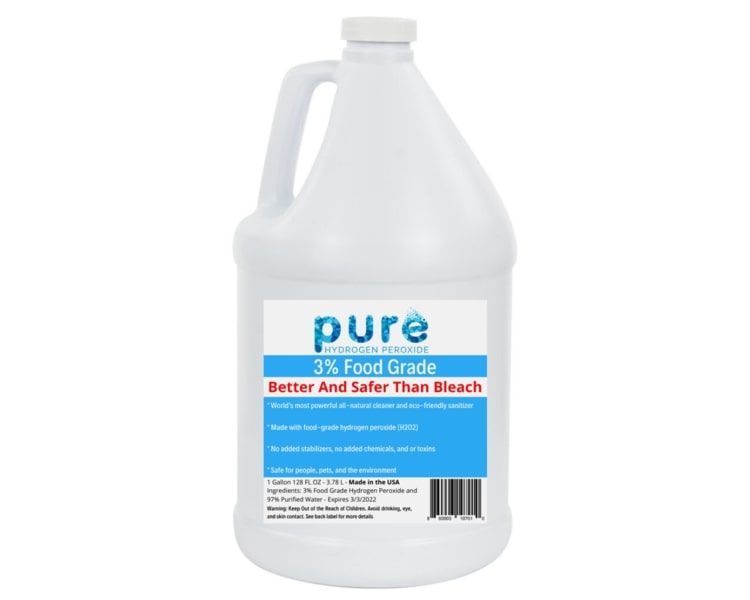
Hydrogen peroxide is an effective chemical solution for bleaching wood.
However, it may not be used for all tree species. For example, if you apply the chemical solution to oak, the tree gets a green hue, but perhydrol is excellent for bleaching birch and beech.
Bleaching is carried out with a 30% solution, it is at this concentration that the composition is most effective.
Before applying the product, the wood is moistened with water and treated with 10% ammonia.
Hydrogen peroxide is also used for bleaching in other areas of activity. You can usually get it in the pharmacy.
Make sure that the bleaching effect of hydrogen peroxide is particularly strong, it colors the wood intensely light.
If in doubt, use a less concentrated solution (you can get up to 12% hydrogen peroxide solutions in the pharmacy).
Advantage of bleaching wood with hydrogen peroxide
Easy to use, usually only a small amount is necessary for the desired result. It is inexpensive, and has no residues.
The residues of hydrogen peroxide have generally converted to oxygen and evaporated within 48 hours.
Thereafter, treatment can continue without any problems.
Disadvantage of bleaching wood with hydrogen peroxide
The disadvantage is the strong bleaching effect: you have to apply it very carefully and evenly splatters .
Uneven application are quickly visible in the end result.
How to Bleach Wood with Oxalic Acid
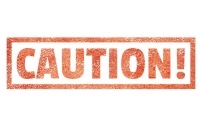
Oxalic acid should be used with caution, because it is very toxic!
Oxalic acid (clover acid, clover salt) is a chemical solution that can be used to remove rust, but also for bleaching wood.
Before applying the acid, the surface is treated with sodium hydrosulfite, and then almost immediately the wood is covered with 10% oxalic acid solution.
Five minutes later, both solutions are washed off with water.
Oxalic acid is well suited for whitening light wood like: maple, poplar, birch, linden.
To achieve the desired effect, 6 ml of oxalic acid is diluted with 0.1 l of water.
The remaining oxalic acid on the wood is neutralized with the following composition:15 g of bleach, 3 g of soda ash and 0.1 l of water.
Then the wooden surface is washed with water.
The effect is not as strong as with hydrogen peroxide, but oxalic acid is particularly harmful to your health.
After bleaching, the residual bleaching must be washed with warm water.
TIPS & TRICKS
Wear suitable and stable protective equipment when handling hydrogen peroxide and even more with oxalic acid:
- long-sleeved clothing
- safety glasses
- gloves that are as thick as possible
- respiratory protection is also recommended for oxalic acid.
5 WAYS HOW TO BLEACH WOOD
These are the 5 ways how to bleach wood:
- Bleach solution
- Hydrogen peroxide whitening
- Calcium Hypochlorite Whitening
- Oxalic acid solution
- Reliable, proven remedy
Wood is a natural material which is a breeding ground for many fungi and molds.
These fungi and mold are the reason why the wood change it’s surface color. They destroy the structure of the wood and increase the moisture absorption.
UV radiation is another reason why wood color change, but it has a smaller effect.Usually the wood gets a gray or yellow hue after UV exposure.
In order to avoid these undesirable effects you can use antiseptic solutions.
But it isn’t always possible to properly take care of the wood at the initial stage of construction.
So as a result, after some time we need to look for ways to restore the damage surface.
Let’s see some several options to bleach wood using special solution which you can do yourself:
- BLEACH Wood SOLUTION
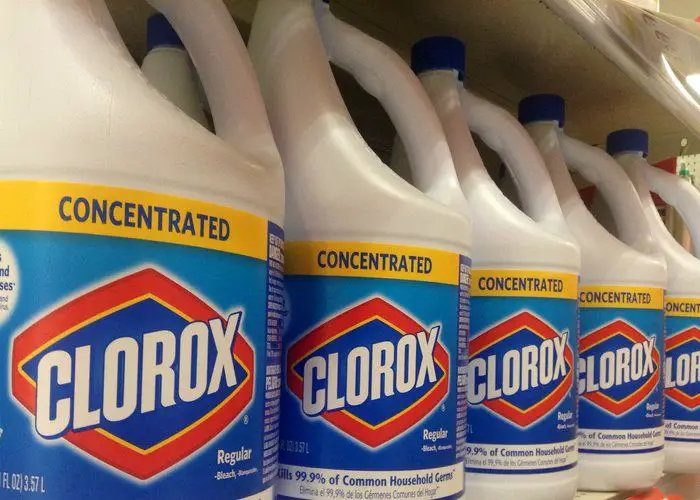
When you start treating the surface with bleach, first you need remove tanning and resinous substances from the material using soda ash or potassium carbonate.
How to prepare and use the bleach wood solution:
- In a bucket of water pour 2 kg of bleach and 0.25 kg of soda.
- Thoroughly mixed everything together and allowed to settle.
- Drain the solution and use it for surface treatment using a roller, brush or spray.
- After 5 minutes, the treated surface should be wiped with acetic acid.
- After 15 minutes the wood whitening of the wood will occur.
- If the wood surface is very dark, repeat the procedure.
- Another way to bleach wood is to soak the wood product in the prepared solution from step 1 and let it stay for about 40 minutes.
If you plan to paint the furniture after you have used this bleach solution it is recommended to wash off the remaining solution with hydrochloric acid diluted in water (1 g per 30 ml).
When you finished bleaching, it is recommended to wash the wood surface with water and a soapy solution.
- HYDROGEN PEROXIDE Bleach
Perhydrol is a concentrated solution of hydrogen peroxide. It is used for bleaching wood, and is applied to the surface using a sponge.
The effect of the Perhydrol can be neutralized with a 4% solution of acetic acid.
Peroxide bleaching should not be used on oak wood because the surface acquire a green tint.
Peroxide bleaching should be used for this type of wood species like: beech, birch and walnut.
Before applying peroxide, the veneer is moistened with water.
Then it is slightly dried, after which it is treated with an additional 10% ammonia solution.
For bleaching ash and birch, a mixture of 20% solutions of hydrogen peroxide and ammonia is suitable in a ratio of 10: 1.
- How to Bleach wood with CALCIUM HYPOCHLORITE
The substance is dissolved in water in a ratio of 8: 100, then with a sponge it is applied to the surface.
After 5 minutes, the wood must be wiped with a solution of 2% acetic acid.
- How to Bleach wood with OXALIC ACID SOLUTION
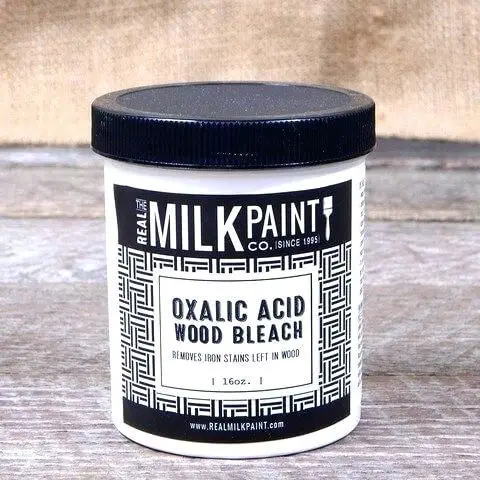
Oxalic acid solution is best suited for whitening light woods such as maple, linden, birch and poplar.
A small amount (1.5-6 ml) of oxalic acid is diluted in 100 ml of boiled water.
To neutralize the solution, the following composition is applied:
- 3 g of soda ash
- 15 g of bleach per 100 ml of water.
Soda is dissolved in hot water, after cooling, bleach is added. At the end, the surface should be thoroughly washed with water and dried.
Oxalic acid is great for whitening oak veneers. Acetic or citric acid may also be used for such a surface.
Accelerated whitening can be carried out using an aqueous solution, to which 2% sulfuric acid, 1.5% oxalic acid and 2.5 sodium peroxide will be added.
- How to Bleach wood RELIABLE, PROVEN REMEDY
Using solutions prepared on your own can cause unwanted changes.
As we have already noted, oak, when bleached by some chemicals, acquires a greenish tint.
But the walnut may show a grayish-blue or pink color. To avoid unwanted changes, it is recommended to use quality proven products from the best manufacturers.
One of these is the wood recovery and bleaching solution . A professional product suitable for restoration and renovation of various wooden surfaces.
The composition does not include chlorine, effectively and quickly removes dirt, mold, fungus, helps to improve the value and quality of wood.
It can be used indoors and outdoors, suitable for almost all types of wood.
Bleach for wood effectively restores the damaged surface, preventing the development of fungus, mold, blue.
This tool brightens the tree well, which has lost its attractive appearance as a result of atmospheric influences, including UV radiation.
How to Bleach Wood Step by Step
Step 1. Preparing the surface
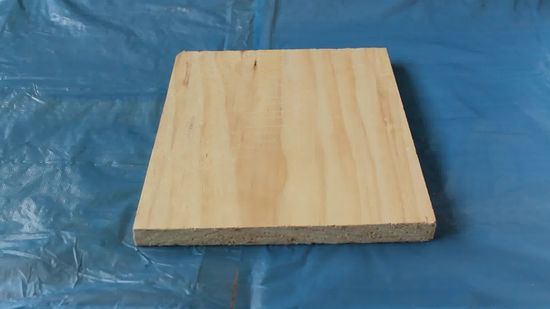
Place the wood in a well-ventilated area. Always work in a well-ventilated area when working with bleach to prevent dizziness or inflammation.
An open garage or patio is an ideal place for wood bleaching.
Because the chemicals in the bleach are very corrosive, you do not want them to come into contact with household items or household items.
Step 2.
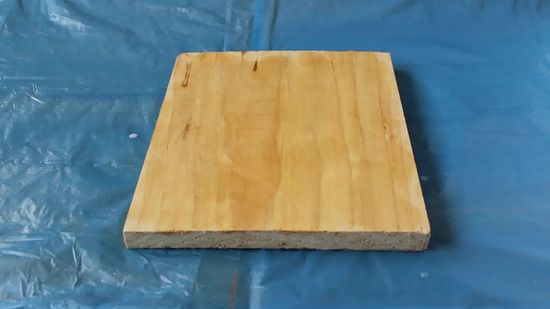
Apply paints or varnishes with a cloth or brush. Varnishes or stain removers are used to remove any paint or wood finish.
It is important to start with the cleanest possible slate when bleaching the wood.
Applications vary depending on the type of varnish or stains to remove the skin, so see the instructions on the package.
It is usually applied with a soft cloth, left to stand for a fixed number of minutes and then rinsed with water.
Varnish detergents are either chemical or citrus based. Chemical removal devices have strong fumes, but can work in just 30 minutes.
Citrus-based elimination agents have a lower odor, but operate more slowly and may require more testing.
You should usually let the wood dry for a day or two after using a varnish or stain remover.
Step 3
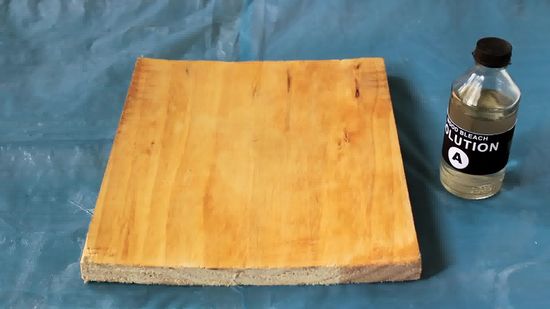
Apply the bleach evenly on the wood. Remove a clean sponge in the solution to saturate it with the bleaching mixture.
Using slow, steady movements, apply the bleach along the wood in straight lines. Continue to apply until the wood is covered with bleach.
If you need to apply bleach at the same time, apply one bleach in this way followed by the other.
Depending on the type of bleach you are using, you may need to wait a certain number of minutes between applying each coat of bleach.
Step 4
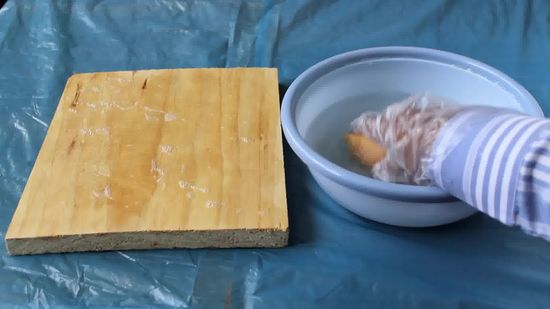
Wash the wood with a 50/50 white vinegar and water solution. Do this as soon as you wipe the wood down with bleach.
It is important to neutralize the wood between treatments. After applying the bleach, mix a solution of half white vinegar and half water.
Take a clean sponge and apply it on the wood in the same way you applied the bleach.
Some bleaching kits include a neutralizer along with the bleach. In this case, it is not necessary to prepare a homemade solution.
Step 5
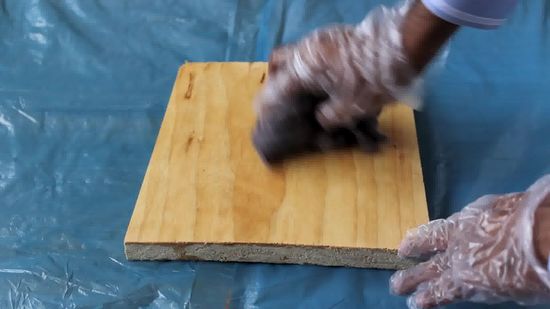
Rinse the wood with water. Use a clean sponge saturated with clean water.
Wipe the wood until the water is clear, making sure to remove all traces of wood bleach and vinegar.
Step 6
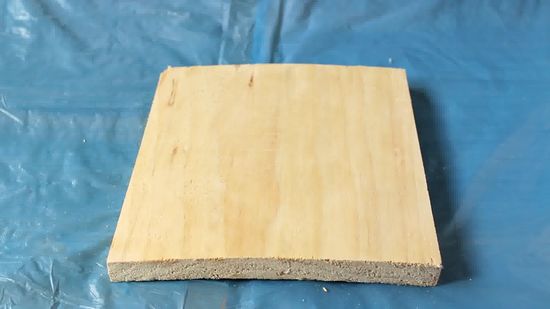
Sandblast Wood. Use sandpaper with a grain size of between 320 and 400.
After the wood is dry, lightly rub the sandpaper along the wood.
This will remove any hard patches and will remove any fuzzy grains.
Step 7
Apply the finish. The application of the finish is essential to protect the wood surface and improve its appearance.
After your wood has completely dried, you can apply a finish. You can buy a wood finish at a hardware store and apply it according to the packaging instructions.
Wear goggles and gloves when handling the finish. Chemicals can damage the skin and sometimes emit dangerous fumes.
For oil-based finishes, use a charcoal respirator to avoid breathing chemicals.
Alternative method on how to bleach wood
You can do all of the above actions yourself or go to the pros . For bleaching darkened wood, we use the composition Acrylite 153 .
It restores the natural color, effectively removes microorganisms, does not interfere with the “respiration” of the tree, does not destroy its structure, does not affect adhesion, strength, tintability and porosity, does not change the smell.
Acrylite 153 is diluted with water in a proportion of one to one (in cases of severe damage to wood, it is not diluted) and is applied to the walls with a roller.
If necessary, after 5 hours, the procedure is repeated. The product is suitable for bleaching pine wood.
Wood whitening tips and tricks
Not always paint can close the uneven color of wood. Even healthy wood can have multi-colored spots – this is a sign of the uneven distribution of natural pigment.
And what about wood that has been stored for years and darkened by air. Sometimes it is necessary to bleach wood and in order to give it a completely white color.
Bleaching is carried out immediately before dyeing wood.
Bleaching agents include hydrogen peroxide, oxalic acid, bleach and titanium peroxide.
Compared with others, hydrogen peroxide, oxalic acid and universal bleach for fabrics are the most effective and affordable.
Each solution is prepared at the rate of 50 ml per 1 m 2 of surface. But all of them must have a certain consistency.
A 10–12% hydrogen peroxide solution is suitable for bleaching wood. Do not increase the amount of perhydrol – this can destroy the upper layers of wood.
It is better to add ammonia in the proportion: for 10 parts of a solution, 1 part of alcohol.
To make the surface evenly discolored, apply a solution to the wood 3-4 times every 10-15 minutes with a cotton swab or a regular brush.
The effect will not be noticeable immediately, but only after 1-2 days.
After the wood gets the desired color, the solution is washed off with warm water.
Oxalic acid is more toxic than hydrogen peroxide; therefore, it is used only in the form of an aqueous 5–10% solution.
The oxalic acid bleaching process involves several steps. First, prepare its 10% solution and 20% sodium hydrosulfite solution.
The surface is treated with a salt solution, after which oxalic acid is immediately applied, mixing the two components on the surface.
After no more than 5 minutes, the solutions are removed by washing the product with warm water.
Oak practically does not lend itself to bleaching with hydrogen peroxide. With prolonged exposure to this substance, its wood only acquires a greenish tint.
This reagent is effectively used for whitening breeds such as walnut, birch and beech.
Before applying a 30% hydrogen peroxide solution, the veneer or array is moistened with warm water, slightly dried and treated with a 10% ammonia solution.
Light wood species – linden, birch, maple, poplar – are bleached with a solution of 1.5–6 ml of oxalic acid in 100 ml of boiled water.
Sometimes, when bleaching, the wood of some species acquires rather unexpected shades.
So, a walnut with a contrasting texture becomes grayish-blue or pink, and oak – greenish.
Bleach Wood with Chlorine
Wood can be bleached with chlorine. Before applying the product, it is necessary to remove the resin from the tree, for this the surface is treated with soda ash.
Next, you need to dilute bleach with water in the following proportion: 2 kg of dry matter per bucket of liquid.
Add 250 g of soda to the diluted solution, mix everything and let it stand a little.
The bleach solution is applied with a brush or roller, and 5 minutes after treatment, the surface is wiped with acetic acid.
After about fifteen minutes, the wood should lighten. If the tree is not lightened enough, the procedure can be repeated.
Another bleach based on chlorine is a whitening solution . It is especially effective for outdoor processing.
Wood is abundantly soaked with a liquid, and then rubbed well into the surface. When using whiteness, it is necessary to protect eyes and hands from contact with the product.
What is the danger of bleaching wood yourself ?
Do-it-yourself home-made masters have a very poor idea of how complicated and dangerous this process is.
All bleaching compounds are based on toxic and toxic substances that, if improperly applied, can ruin the surface and cause irreparable harm to health.
Non-professionals often incorrectly calculate the concentration of the product, violate the proportions, do not include the necessary components in the composition, which negatively affects the wood.
It is necessary to strictly observe the technology of applying and washing off the product. The slightest violation of the process can lead to very sad consequences.
To avoid mistakes and prevent negative consequences, it is necessary to entrust the whitening of a wooden surface to specialists.
If the walls of your wooden house are corroded by a fungus, darken and become blue, contact our company.
We will quickly and efficiently carry out all the necessary measures to whiten and renovate your home, which will regain its lost beauty.
How to DIY Bleach Wood
You can also bleach wood yourself if you have some skill and are careful.
In this article you will find detailed information on where it makes sense to bleach wood, which bleaching agents are used and how they are used correctly.
Faced with the problem of changing the color of the walls of the house, many decide to cope with it on their own.
To do this, inexpensive and affordable liquids for bleaching wood are used:
- hydrogen peroxide
- oxalic acid.
Whitening wood with hydrogen peroxide is a simple and effective way. But it does not work on all types of wood.
For example, oak peroxide does not bleach, and even changes its color. But it is perfect for bleaching birch, beech or walnut
The correct concentration of the chemical solution is at least 30%. Before applying the walls, the houses are moistened with warm water and covered with a thin layer of ammonia (10%).
After the bleaching procedure, it is necessary to clean the surface with a mixture of soda ash and bleach.
For 15 grams of lime you need to take 3 grams of soda and 100 grams of water.
Oxalic acid bleaching should be performed with caution.
The fact is that the desired effect can be achieved by mixing all the ingredients in the right percentage.
You will need a 10% solution of oxalic acid and a 20% solution of sodium hydrogen sulfate.
First, sodium hydro sulfate is applied to the surface, then a solution of oxalic acid.
After five minutes, the compositions must be washed off the surface with water.
Another way is to whiten the wood with whiteness. However, when working with bleach, safety rules must be respected: work with gloves, protect your eyes.
The usual composition of the mixture for bleaching wood
Usually, a mixture of 40% peroxide and 30% ammonia in a ratio of 9: 1 is applied to bleach wood; this mixture is suitable for dipping. The richer the peroxide solution, the more effective the whitening.
What paints and varnishes can be applied after bleaching?
After treating the surface with hydrogen peroxide, it is recommended to apply acrylic or single-component paints and varnishes, while polyurethane ones turn yellow.

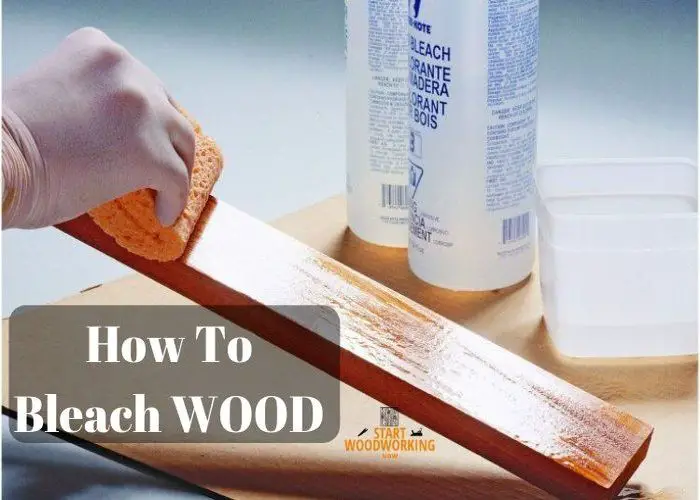

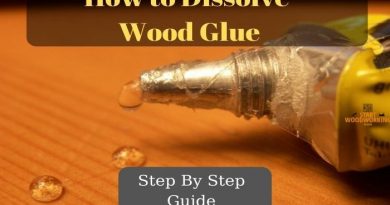

Comments are closed.